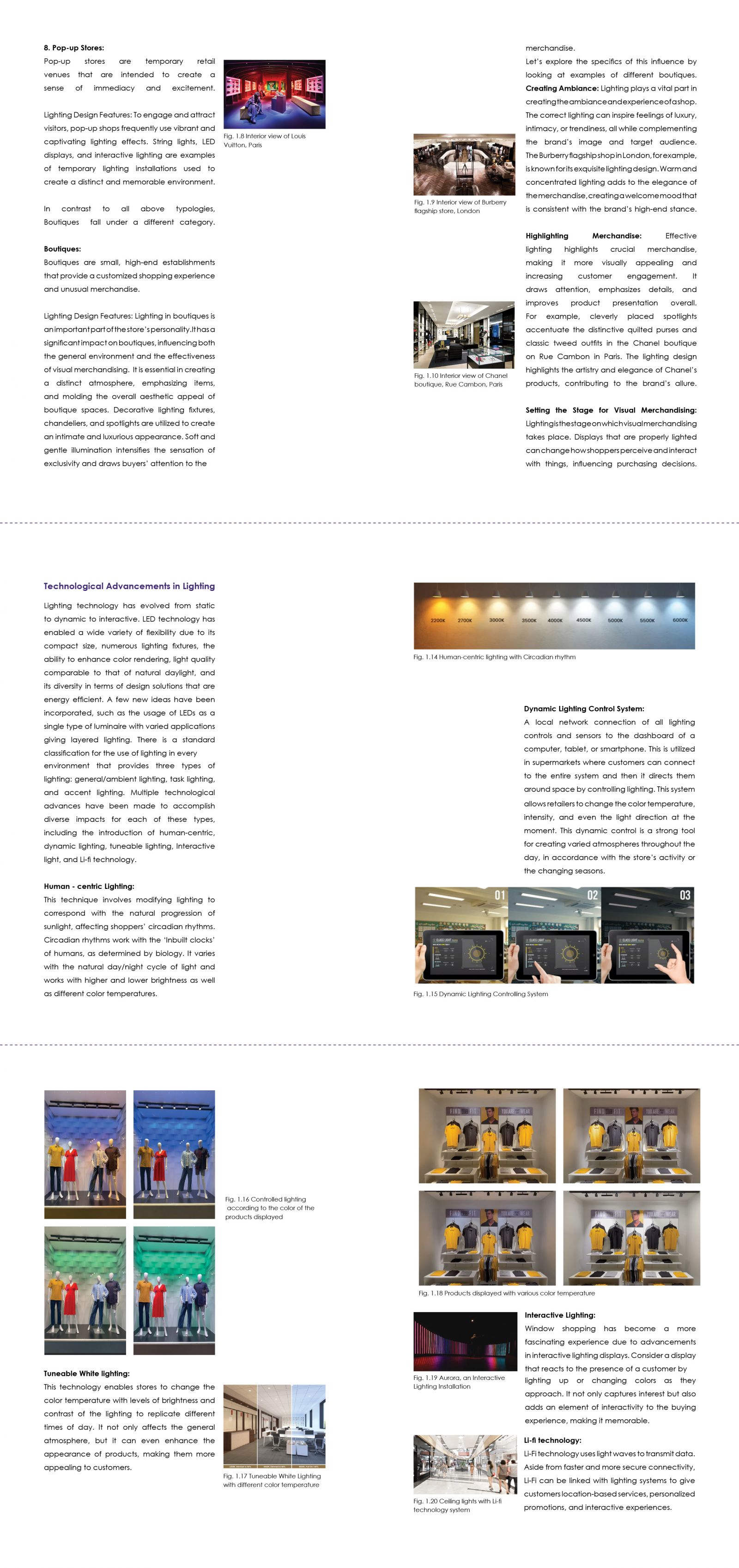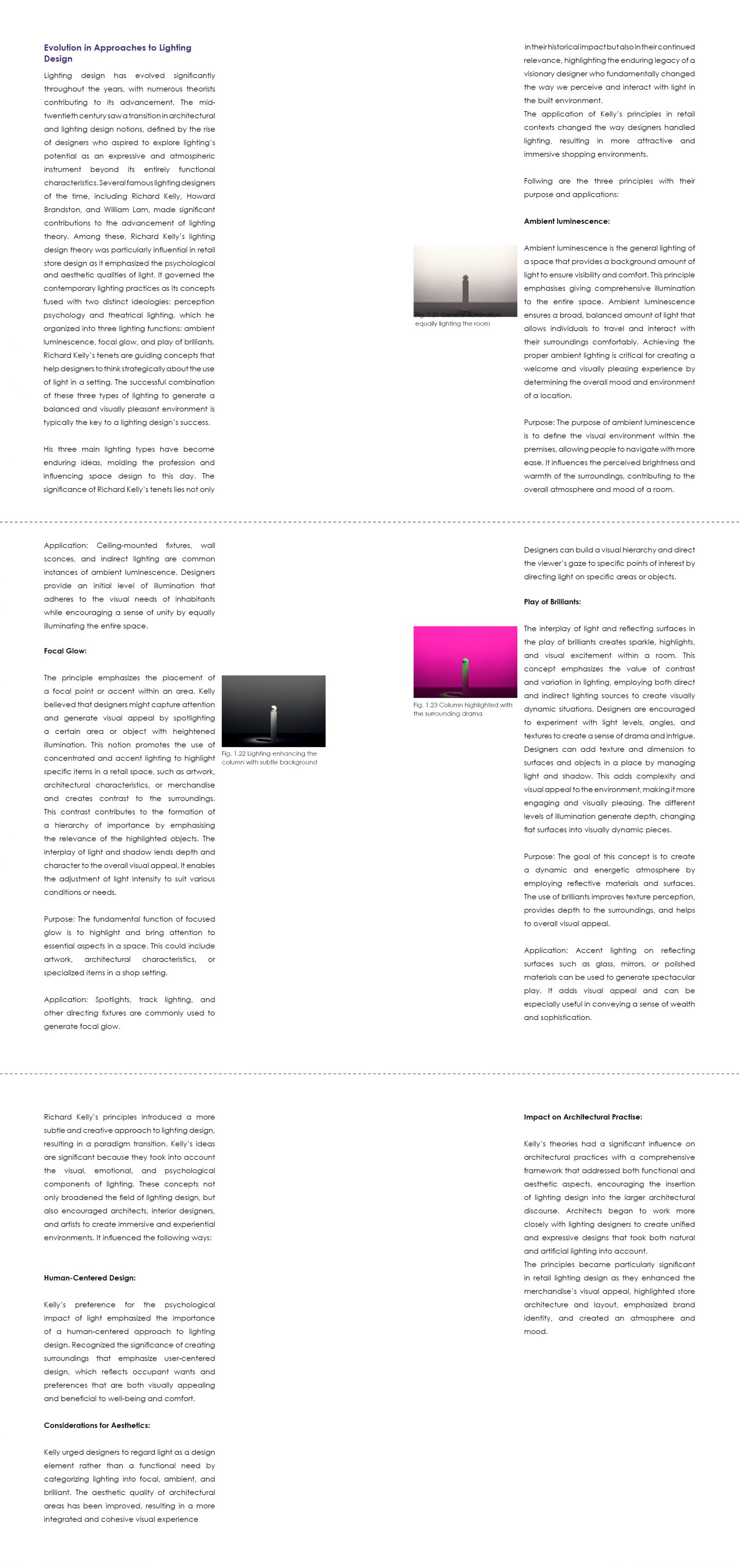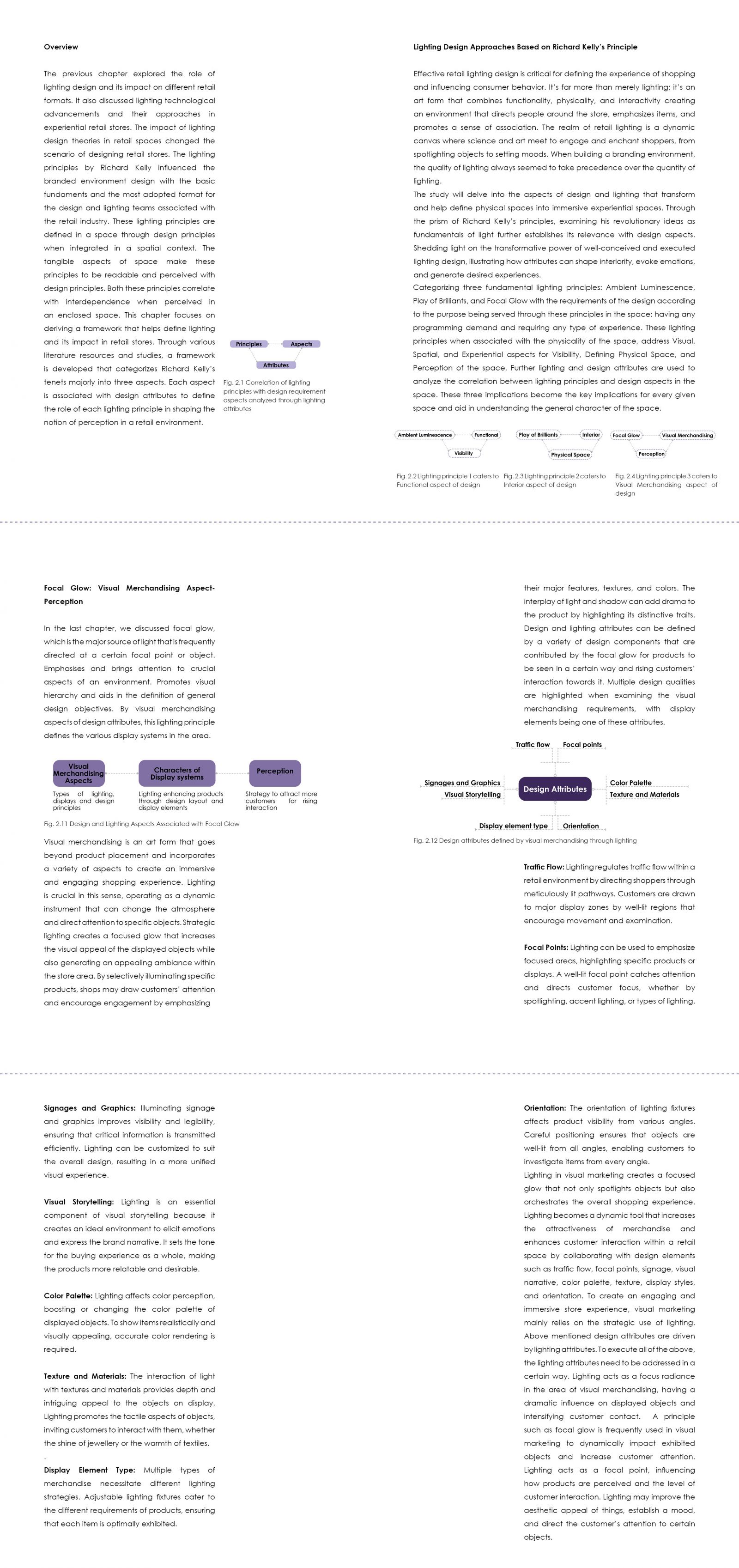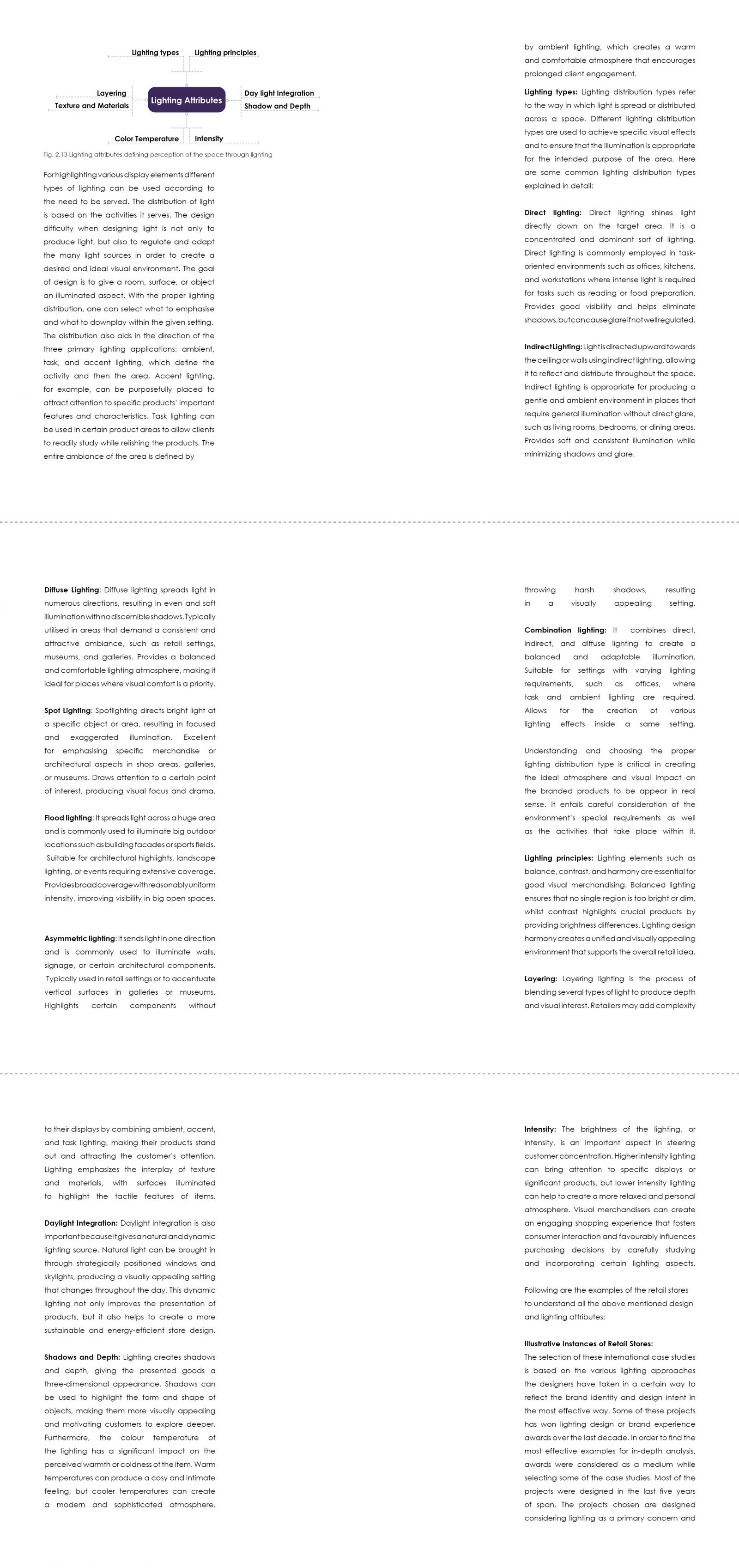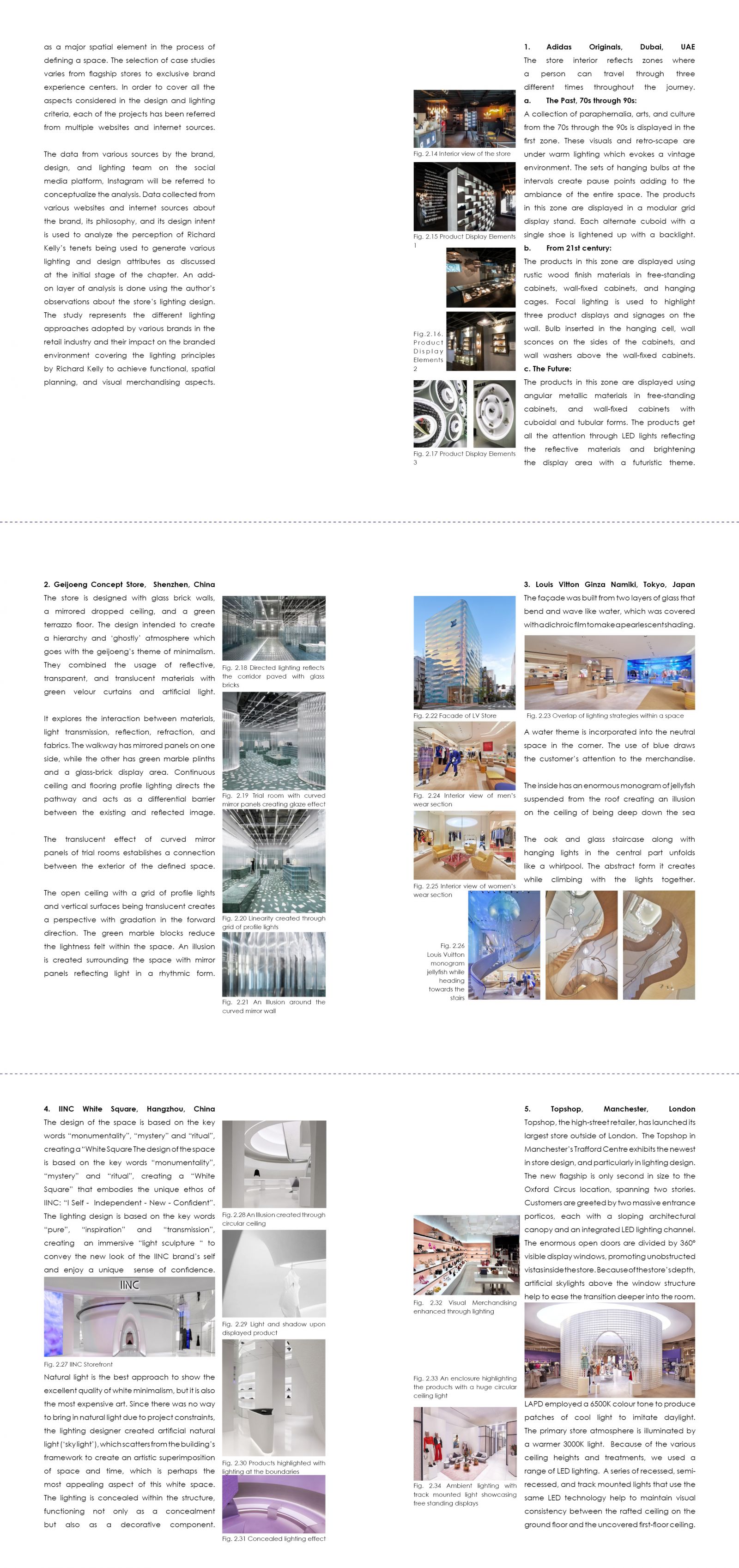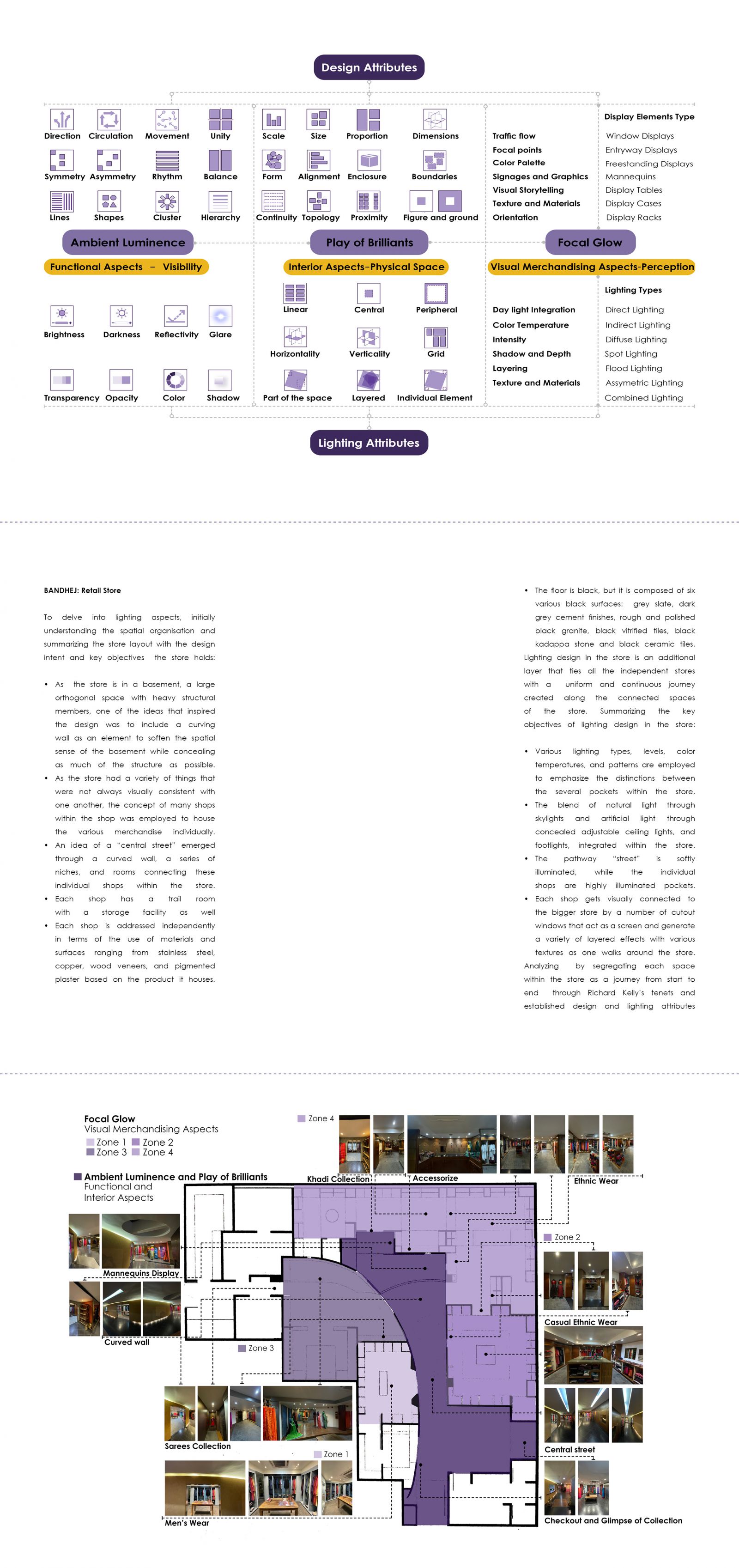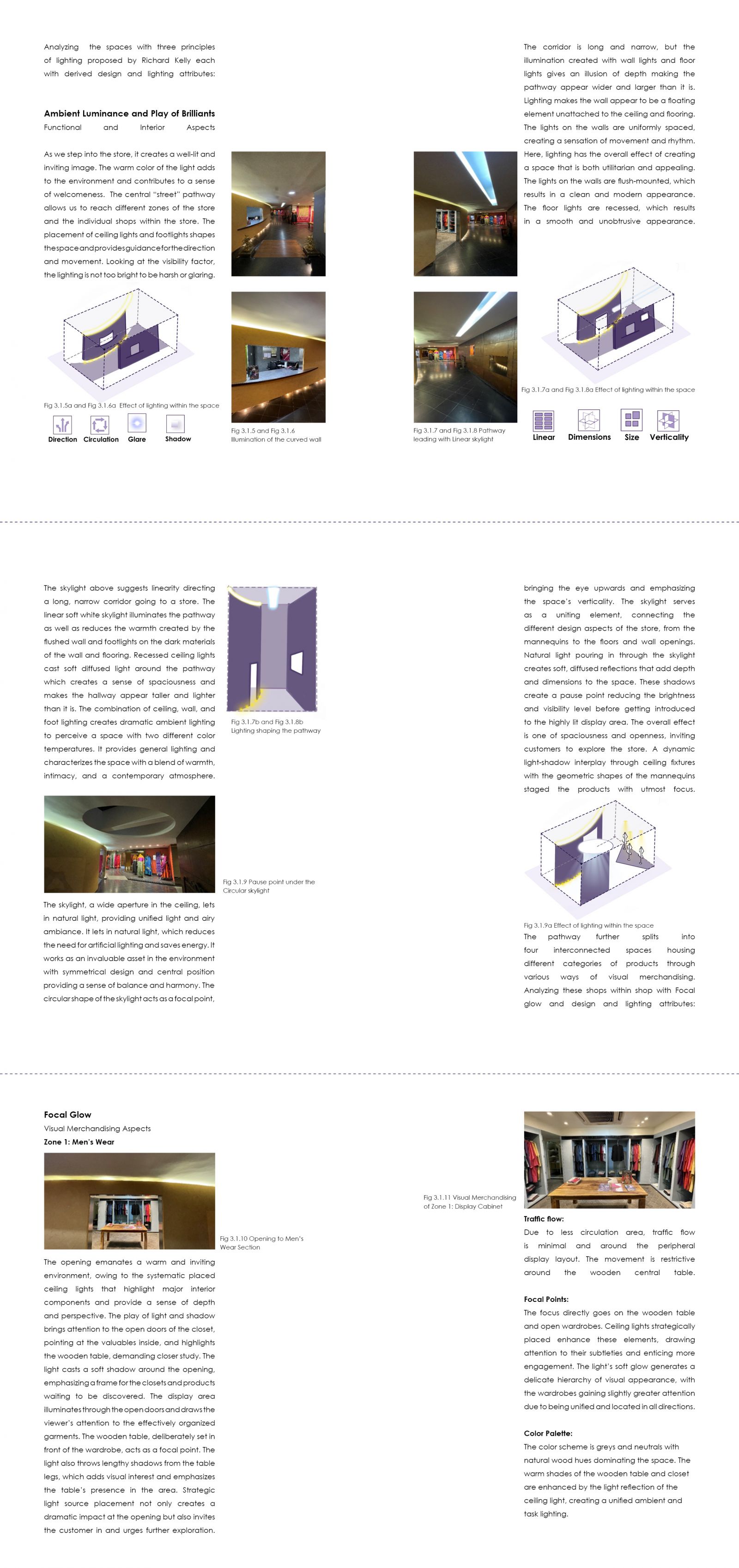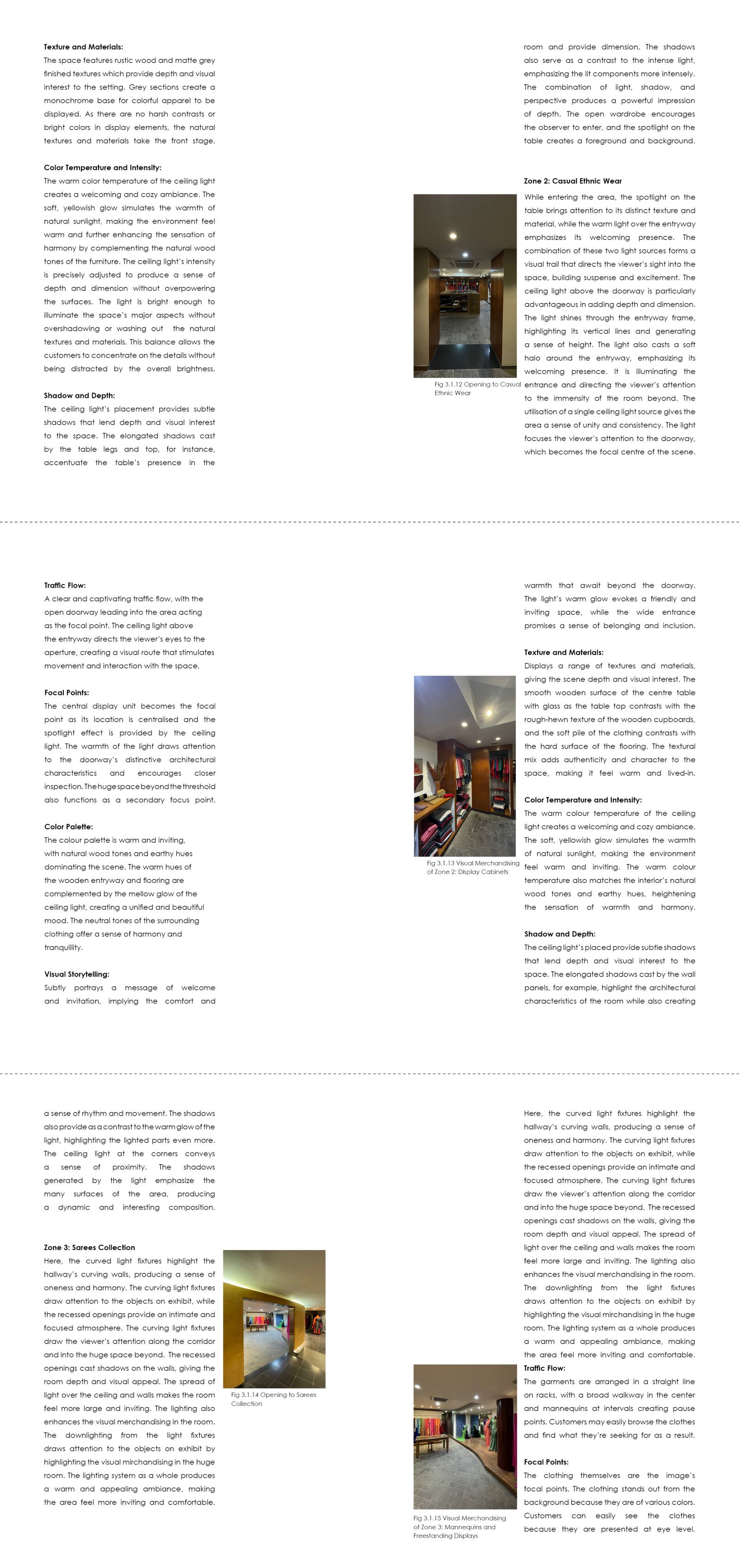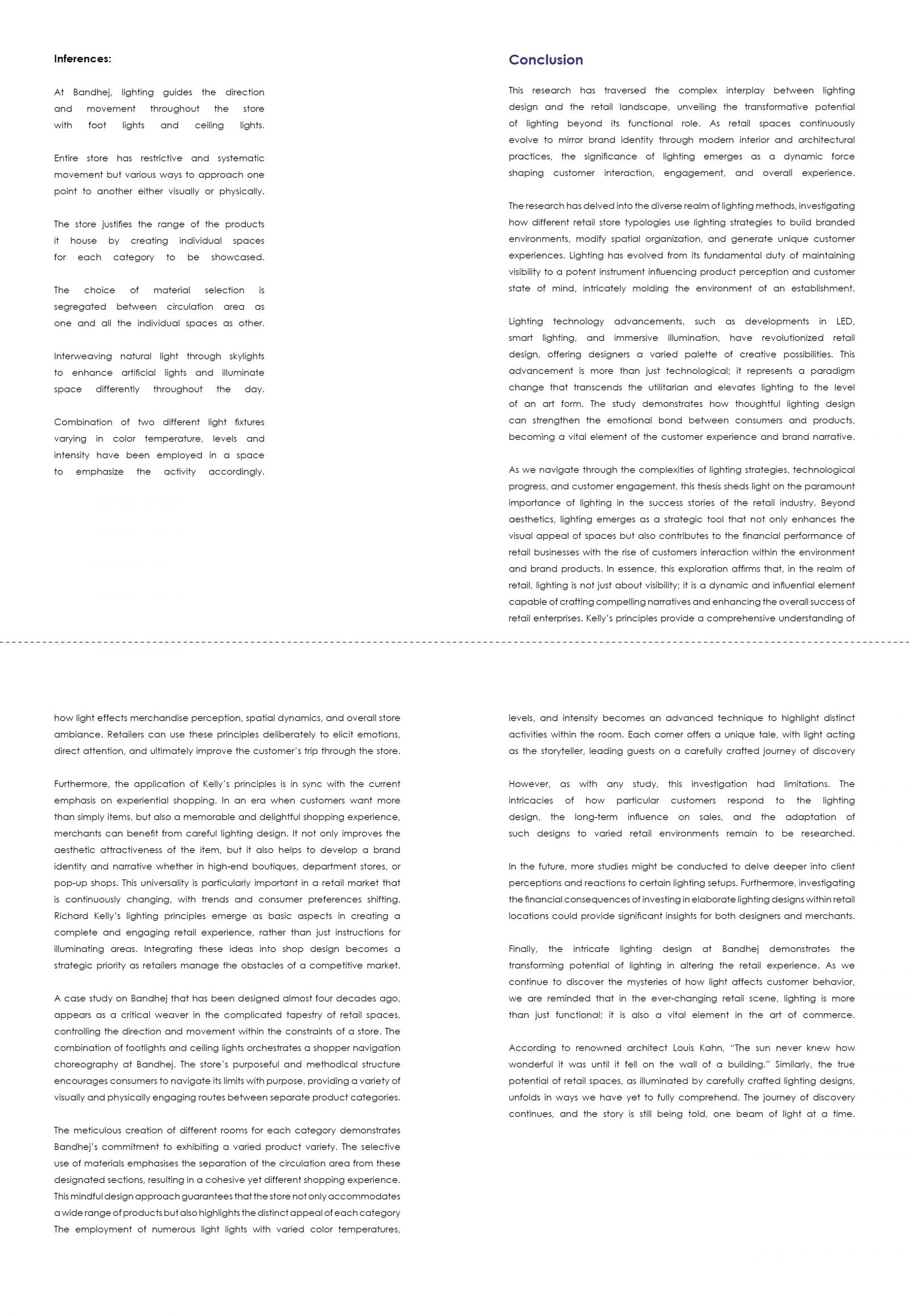Your browser is out-of-date!
For a richer surfing experience on our website, please update your browser. Update my browser now!
For a richer surfing experience on our website, please update your browser. Update my browser now!
This study illuminates the intricate connection between lighting design and the retail environment, recognizing lighting as a potent tool affecting branding and consumer experiences rather than just an essential requirement for visibility. Lighting transcends its fundamental role in the constantly changing field of retail, where interior spaces serve as an outlet for brand language and image, to become an art form that influences spatial organization, visual merchandising, and customer perception. The study delves into the evolution of lighting technologies, such as breakthroughs in LED, smart lighting, and immersive illumination, which have transformed the retail design scene. It goes into the many tactics and strategies used by various retail store typologies, studying the influences of lighting design upon product display, the layout of stores, and overall customer experiences. The study aims to explore Richard Kelly’s lighting principles to identify the impact of lighting in retail spaces. Through its principles being categorized further, various design attributes along with the lighting attributes have been used to thoroughly analyze three traditional wear brands in the luxury segment in India. Thus, the purpose of this research is to shed light on immersive and experiential lighting dimensions as an art form capable of establishing functional and spatial characters of the environment to be interpreted in a certain way through the customers’ journey with brand products.
View Additional Work
